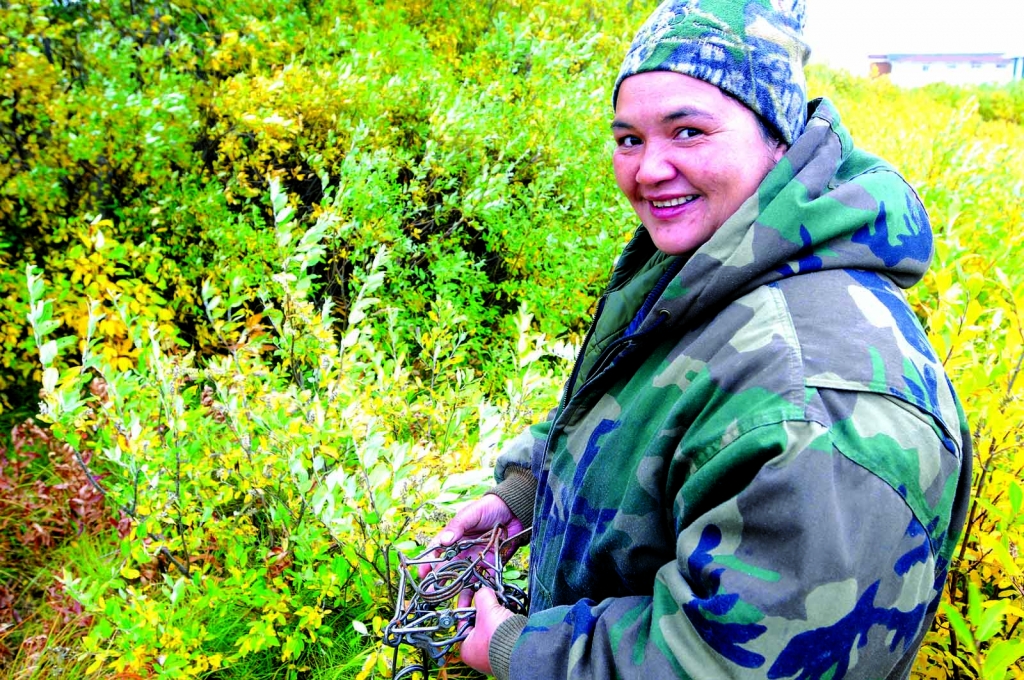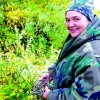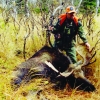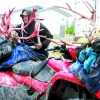My father (babaa) was tall, six-foot four, with blue eyes and a long black beard, and he always wore a grey newsboy cap. He was strict with us, but would also try to make us laugh from time to time. It was my babaa who taught me to trap.
From my earliest memory my father, mother, my two brothers and I would leave for our annual trip to the trapline at the end of September, just before the rivers and muskeg froze. We would spend a week at a temporary camp waiting for the freeze before moving on to our trapping area.
For three months we would live on the land and work the lines. In the mornings I would wake to babaa making a fresh pot of fragrant Labrador tea in our little cooking pot and baking bannock on the hot coals.
My family and I would stay out on the land until Christmas when we would return to the community in time to dry and ship some of our furs out to be auctioned. In January, we would return again to camp, but only for a couple of weeks. Just long enough to pack it up. For the rest of the season babaa would make day trips to the trap lines, just as I do now.
I went out to trap alone for the first time when my father became ill with complications after 30 years with diabetes. I was 18 years old, and I was very nervous about doing it right. I had learned by watching my father through the years, but it was when I caught something that I knew I was doing it right.
My parents taught me to trap, skin and dry the pelts we caught. The first time I tried to skin a catch it was a beaver, and I cut the ears off leaving two big holes in the pelt. Afterward my mother (nemama) pointed out my mistake. I never made it again.
Today, when I go out to set and check my traps, I leave in the early morning before sunrise and return after 10 o’clock at night. Whether a blizzard is blowing, and no matter how bitter the temperature, I head out on my snow machine. During the seven or eight hours of daylight I can set about 30 traps.
I use goose pieces to bait the traps hoping for a good catch. These days, marten bring the best price at the fur auction.
While I have never been afraid on the land, there can be the occasional nuisance, like a wolverine that finds my line and follows it, tearing traps apart with no sympathy. When this happens, the process of setting out the traps begins all over again, along with laying a trap for the crafty wolverine.
There are not many women who trap, but I learned a lot from my parents, how to live off the land, to snare rabbits and to trap beaver. It was their lessons that led to my life as part-time trapper, which now makes up a significant part of my income, especially when I don’t have other work in the community. To protect the animal population for the future, each year I move to a different section of my trapping territory to let it recover.
The days are long and trapping is hard work, but I enjoy getting away to see the trees and animals. It’s just so peaceful. Each year I look forward to the excitement of wondering what I will find in my traps, and returning to the land that my babaa taught me to respect.
I am the product, evolution of many thousands of years as are you.













I am the product, evolution of many thousands of years as are you. I grew up on the land in the remote far north of Ontario following in the footsteps of my...
One of the most beautiful serene places I’ve ever visited was on the banks of the Opinagau River in northern Ontario, just near the corner of land where...